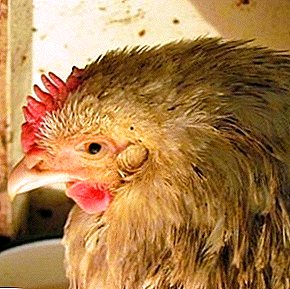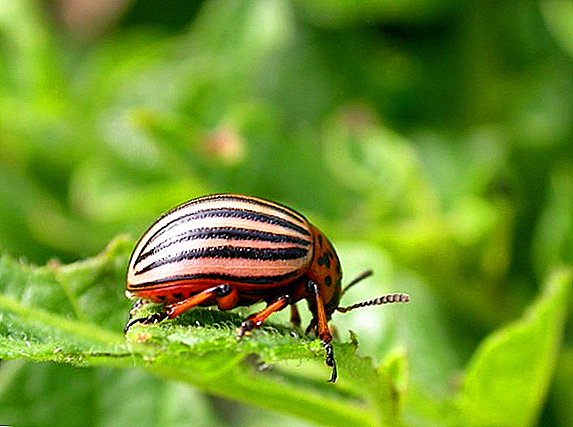
Chickens, like any other poultry, often suffer from respiratory diseases.
They are easily transferred between sick and healthy birds, so breeders need to be attentive to the health of their livestock.
The most common cause of the common cold and cough in chickens is mycoplasmosis.
Mycoplasmosis is an infectious disease that occurs in various types of poultry in the form of an acute and chronic complex of lesions of all respiratory organs.
This disease spreads through the hens transovarially, through the water or through the air.
Also, the disease may occur faster due to a sharp cooling, stress associated with the relocation of birds.
What is mycoplasmosis in chickens?
Mycoplasmosis develops faster in chickens that are vaccinated against other infectious diseases, since this disease is usually greatly complicated by other viruses and parasites.
 About mycoplasmosis chickens became known relatively recently.
About mycoplasmosis chickens became known relatively recently.
Only now veterinarians were able to identify the exact cause of this chronic respiratory disease.
It is characterized by high contagiousness, which quickly affects the well-being of healthy birds.
They are easily infected from sick individuals, and then transmit the pathogens to the next birds.
The spread of mycoplasma on one farm can cause additional costs for the farmer.
Of course, the bird will not be able to die immediately, however, for the treatment of mycoplasmosis, an entire amount of funds will be needed for the entire hens.
Not only chickens can get mycoplasmosis, but also geese, turkeys, and ducks. In this case, the disease is easily transmitted from geese to ducks, from chickens to turkeys, etc.
That is why infected individuals should be immediately isolated in a separate enclosure where their subsequent treatment will take place.
Causative agent
 The causative agent of mycoplasmosis is Mycoplasma gallisepticum and Mycoplasma synoviae. These microorganisms easily penetrate into the mucous membranes of the chicken.
The causative agent of mycoplasmosis is Mycoplasma gallisepticum and Mycoplasma synoviae. These microorganisms easily penetrate into the mucous membranes of the chicken.
They are particularly easy to infect the respiratory, reproductive, and immunopolyent organs and tissues, causing a general depletion of the bird and a decrease in its productivity.
Mycoplasmas are polymorphic microorganisms that multiply rapidly in chicken embryos.
Course and symptoms
 Outbreaks of mycoplasmosis are caused after direct contact of weakened birds with infected individuals.
Outbreaks of mycoplasmosis are caused after direct contact of weakened birds with infected individuals.
In addition, the disease can spread through airborne droplets or with fluff.
In total there are 4 stages of the spread of this disease among chickens. The first stage is called latent.. It lasts from 12 to 21 days. During this period it is difficult to notice that the chickens are sick with any disease.
The second stage begins at the end of the first. It is characterized by the appearance of the first symptoms of respiratory mycoplasmosis in 5-10% of birds. During the third stage, young animals actively produce antibodies, and the fourth differs in that all chickens become active carriers of mycoplasmosis.
If the population density of young stock will increase, then the speed of mycoplasma spread will also increase. Usually, this infection is transmitted through the eggs: from the diseased chicken to the embryo.
Immediately after the completion of the incubation period, young tracheal rales, runny nose and cough are recorded in the young. During an illness the appetite sharply decreases, therefore young birds quickly lose all. As for hens, their egg production falls.
 On our site you can find information about such a rare breed of cooks like the Alsatian hens.
On our site you can find information about such a rare breed of cooks like the Alsatian hens.If you have problems with astilba transplantation in the fall, this can be easily solved by reading our tips here.
In roosters, infection is more common.. Very often they are the first to begin to suffer from a runny nose and cough, therefore, as a rooster, one can judge about the condition of the entire livestock of the bird.
Diagnostics
 Before deciding the diagnosis, veterinarians must isolate and identify mycoplasma.
Before deciding the diagnosis, veterinarians must isolate and identify mycoplasma.
For this purpose, a direct seeding of exudates is carried out by the method of smears-prints into a Petri dish, which is pre-filled with agar.
Then, antibodies are used to prove the presence of mycoplasmas. Antigens are tested with a special serum, which is used to treat mycoplasmosis.
Often, a more modern method, the polymerase chain reaction, is used to make a diagnosis. It allows you to quickly make the appropriate diagnosis and go to the treatment of livestock.
Respiratory treatment
 Mycoplasmas are vulnerable to antibiotics such as streptomycin, oxytetracycline, chlortetracycline, spiramycin, thiomycin, erythromycin and lincomycin.
Mycoplasmas are vulnerable to antibiotics such as streptomycin, oxytetracycline, chlortetracycline, spiramycin, thiomycin, erythromycin and lincomycin.
They are used to successfully treat diseased birds.
As a rule, for these purposes is used oxytetracycline or chlortetracycline at a dosage of 200 g of antibiotic per 1 ton of feed for 5 days.
Antibiotic typosin can be administered by injection at a dosage of 3-5 mg per 1 kg of bird weight. Tiposin allows to restore egg production in patients with laying hens. Tiamulin is used to treat young animals.
Prevention
 For effective prevention of mycoplasmosis, special attention should be paid to new birds entering the farm.
For effective prevention of mycoplasmosis, special attention should be paid to new birds entering the farm.
The first time such chickens need to be isolated, to accurately determine whether they have a disease or not. At the same time you need to monitor the microclimate in the house.
Do not forget about the observance of comfortable air temperature and humidity, as these factors can either increase or reduce the natural resistance of the bird.
To completely eliminate the hidden carriage of mycoplasmas is carried out additional embryo researchwho died in the first days of incubation.
If the eggs were purchased on a different farm, then they should be incubated in isolation, until it is determined that the young are not sick.
The main control measures in mycoplasmosis are:
- Slaughter and disposal of sick birds.
- A clinically healthy bird is fattening and also sent for slaughter soon.
- The herd is stocked with the help of purchasing young stock and eggs from more prosperous farms.
- Litter is burned or stored for biological treatment.
- Disinfection on a problem farm is carried out every 5 days, using a 2% sodium hydroxide solution or a 2% formalin solution.
Conclusion
Mycoplasmosis is able to spread very quickly among poultry.
It often becomes the cause of a significant decrease in the productivity of chickens, therefore, all preventive measures should be treated as responsibly as they help to keep farm incomes at the same level, and also help save the bird from premature slaughter.












